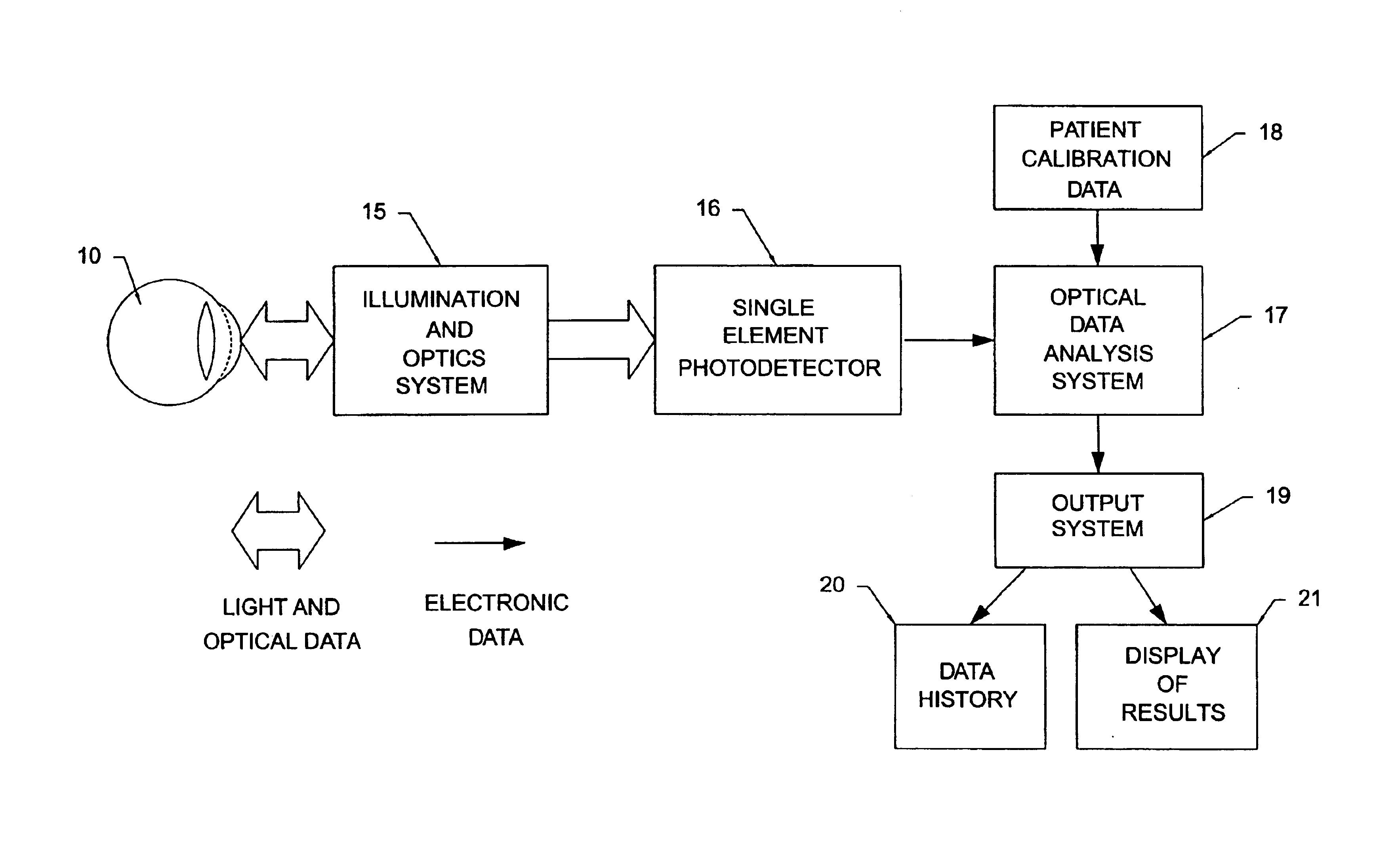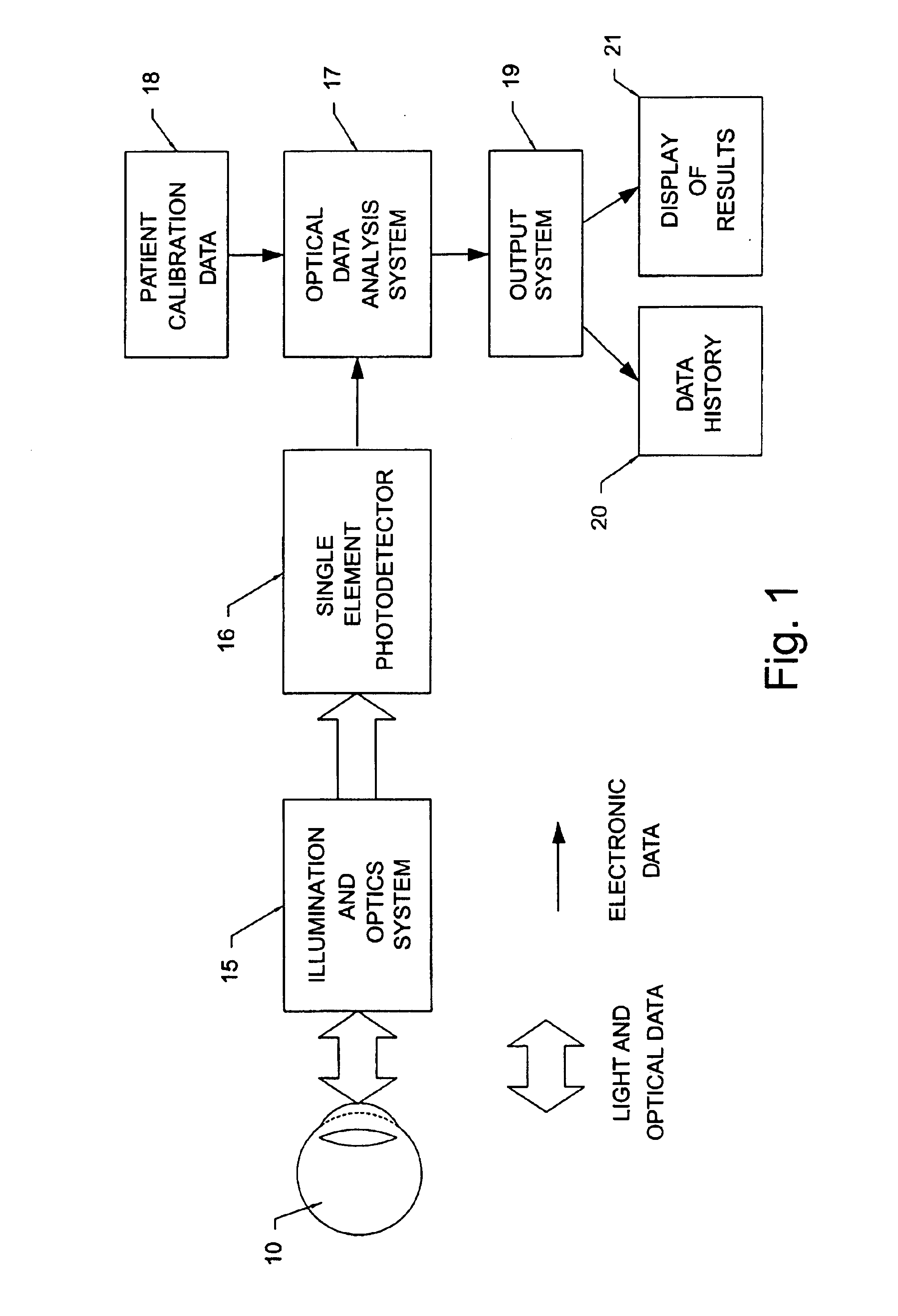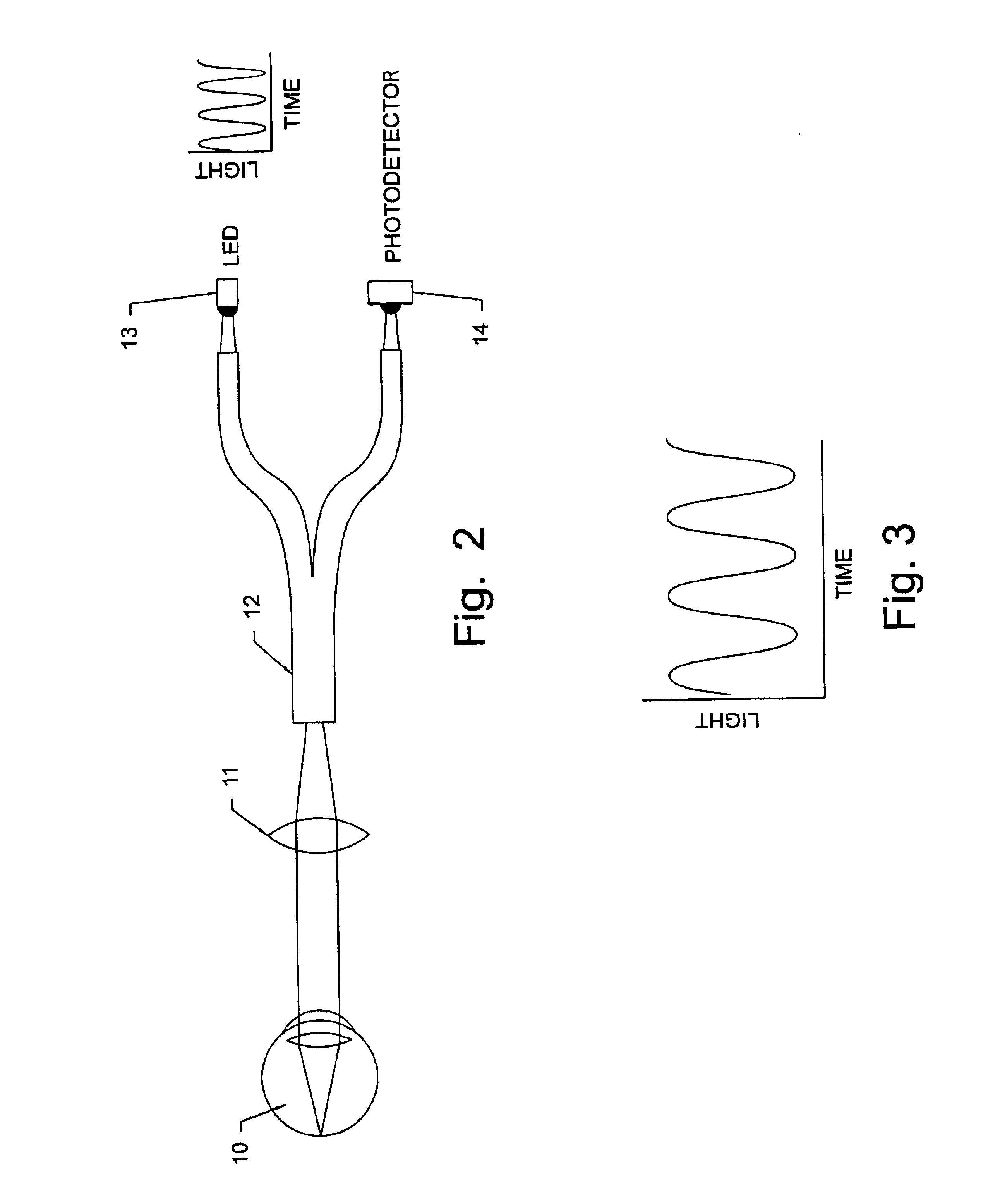Non-invasive measurement of blood analytes using photodynamics
- Summary
- Abstract
- Description
- Claims
- Application Information
AI Technical Summary
Benefits of technology
Problems solved by technology
Method used
Image
Examples
Embodiment Construction
[0024]Rhodopsin is the visual pigment contained in the rods and cones of the retina. As this pigment absorbs light, it breaks down into intermediate molecular forms and initiates a signal that proceeds down a tract of nerve tissue to the brain, allowing for the sensation of sight. The outer segments of the rods and cones contain large amounts of rhodopsin, stacked in layers lying perpendicular to the light incoming through the pupil. There are two types of rhodopsin, with a slight difference between the rhodopsin in the rods (that allow for dim vision) and the rhodopsin in the cones (that allow for central and color vision). Rod rhodopsin absorbs light energy in a broad band centered at 500 mn, whereas there are three different cone rhodopsins having broad overlapping absorption bands peaking at 430, 550, and 585 nm.
[0025]Rhodopsin consists of 11-cis-retinal and the protein opsin, which is tightly bound in either the outer segment of the cones or rods. 11-cis-retinal is the photorea...
PUM
 Login to View More
Login to View More Abstract
Description
Claims
Application Information
 Login to View More
Login to View More - R&D
- Intellectual Property
- Life Sciences
- Materials
- Tech Scout
- Unparalleled Data Quality
- Higher Quality Content
- 60% Fewer Hallucinations
Browse by: Latest US Patents, China's latest patents, Technical Efficacy Thesaurus, Application Domain, Technology Topic, Popular Technical Reports.
© 2025 PatSnap. All rights reserved.Legal|Privacy policy|Modern Slavery Act Transparency Statement|Sitemap|About US| Contact US: help@patsnap.com



